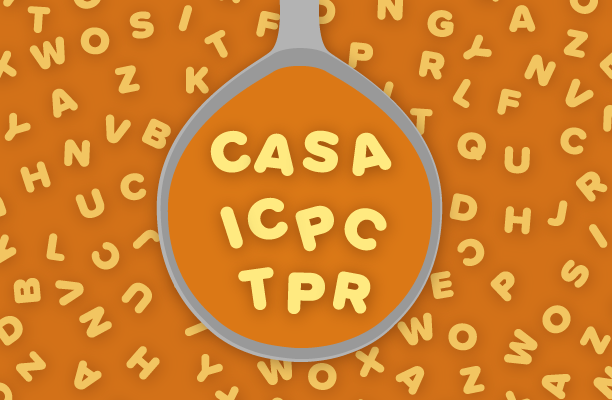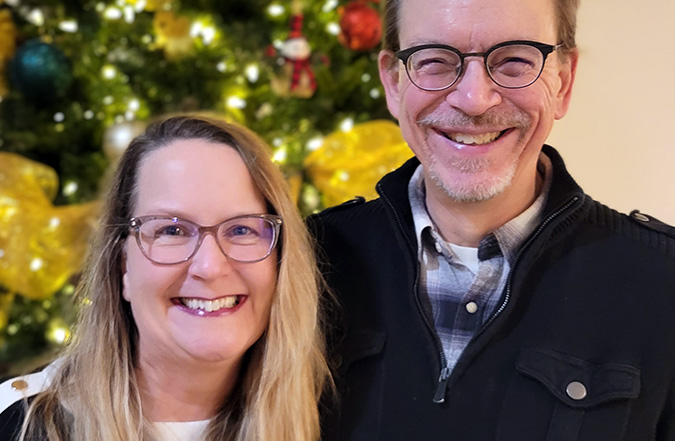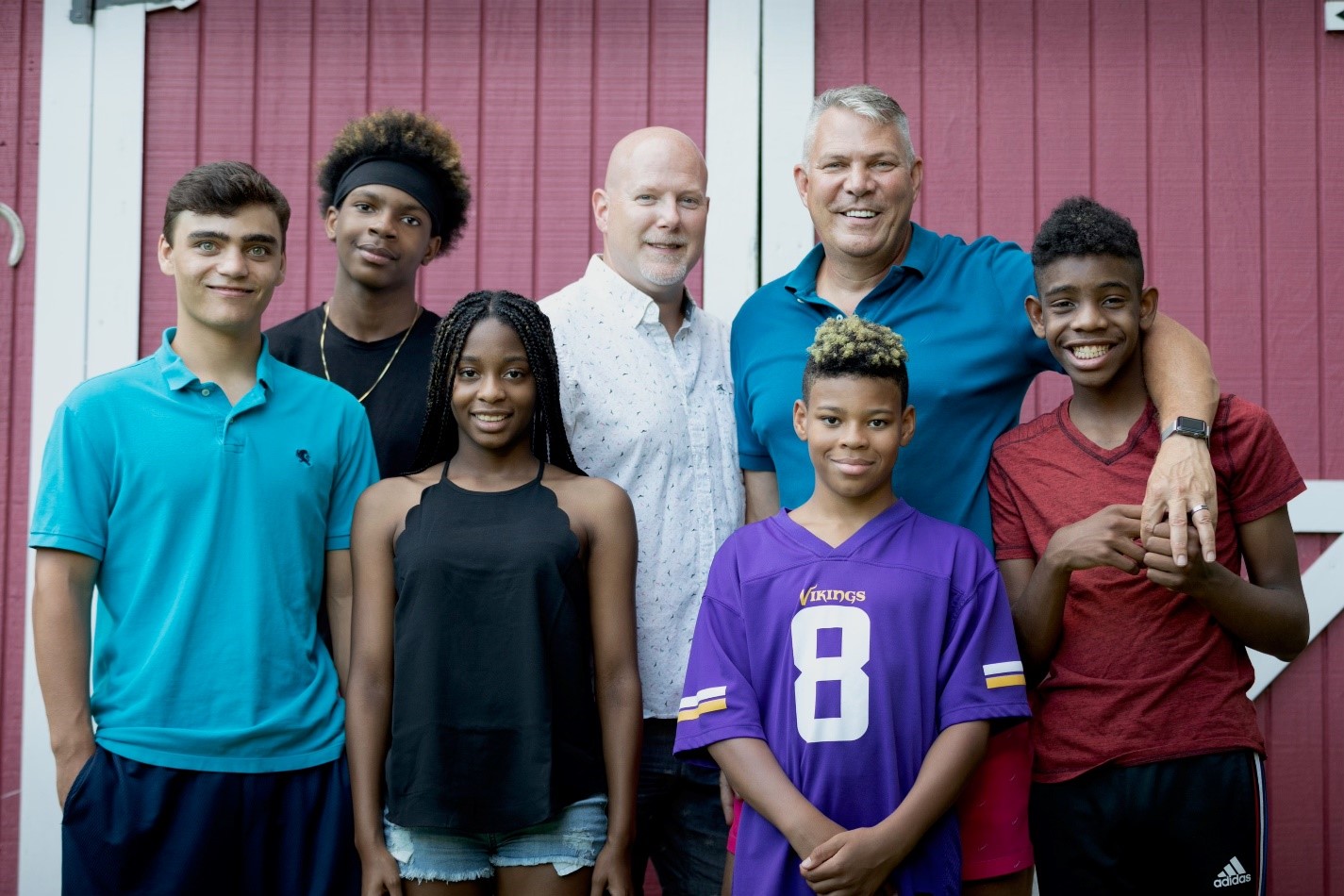
In this post, we’ll help you decode 12 of the acronyms and abbreviations you’ll encounter along the path to parenthood and understand how they apply to your family.
ACEs: Adverse Childhood Experiences
ACEs is a body of research that links early childhood trauma to health outcomes later in life. As part of the study, researchers developed questionnaires that can you can use to measure 10 types of childhood trauma.
The study also found that positive, supportive relationships with adults can help buffer the negative effects of toxic levels of stress. In your training classes, you’ll learn about ACEs and how to help children overcome past trauma. You can also read about how trauma affects children on our website.
AAP: Adoption assistance programs
Children with special needs who don’t qualify for federal adoption assistance often qualify for state adoption assistance. These programs may provide monthly payments, medical assistance, and other support until a child turns 18 or 21.
You can search for adoption assistance programs by state on the North American Council on Adoptable Children’s website.
CPS: Child protective services
CPS is a division or department of a social services agency that receives reports of child abuse and neglect, conducts investigations and assessments, and provides intervention and treatment services to children and birth families. The broader human service agencies is sometimes referred to as DCF, DCFS, DSS, and DHS, depending on the state.
If you are a foster parent, you might meet a CPS worker when a child who has recently entered care is placed in your home.
CASA: Court-appointed special advocates
These volunteers are appointed by judges to advise the court about what they feel is in the best interests of a child or teen. They do this by spending time getting to know the child and talking with everyone in their life—teachers, foster parents, caseworkers, medical providers—and compiling what they learn into a report to the court.
In some states (like Florida), these advocates are known as volunteer guardians ad litem (GAL). This is different from a paid guardian ad litem, who is usually an attorney.
ICWA: Indian Child Welfare Act
This federal law gives tribes legal authority in child welfare cases and gives members of the child’s extended family and members of any tribe preference when making placement decisions about Native American children. It also spells out criteria for foster and pre-adoptive homes.
ICWA applies only to children who are members or eligible to be members of a federally recognized tribe, not to all Native American children.
If you have questions about whether you are eligible to adopt a child when ICWA is involved, talk with your worker first.
ICPC: Interstate Compact on the Placement of Children
Because adoption laws vary by state, when children are adopted by families in another state, the adoption must meet the requirements of both states. The interstate compact exists to ensure that both state’s laws are met so that children are safe and receive the financial assistance they are entitled to.
You may hear that interstate adoptions take longer because it increases the amount of communication and paperwork. The good news is that courts and agencies have a great deal of experience working through the requirements of interstate adoption and are skilled at bringing children and families from different states together.
IEP: Individualized Education Program
Most children in foster care have an IEP in place. Which is a good thing! An IEP is a written, detailed description of the instruction and services that a child who requires special education needs to support their academic achievement.
It is developed by a team that includes the child’s parent or caregiver, general education teacher, and special education teacher. The services included in the plan must be provided at no cost to parents, and the team must review the plan at least once each year.
To get an IEP, a child must have one or more of 13 disabilities listed in the Individuals with Disabilities Education Act (IDEA).
You may also hear the term 504 plan. This is more flexible and less stringent than an IEP. Like an IEP, a 504 plan supports children’s academic success and services are provided at no cost to parents. If your child needs extra supports and does not qualify for an IEP, a 504 plan may be a good option to pursue.
MEPA: Multiethnic Placement Act
MEPA was created to prevent a child’s or prospective parent’s race, color, or national origin from delaying or denying a child’s placement in foster care or adoption. Many children in care are placed with parents of a different race or ethnic background.
The Act also requires agencies to work to recruit families that reflect the ethnic and racial diversity of children of children in their state.
You can read more about transracial adoption on our website.
RAD: Reactive attachment disorder
Reactive attachment disorder (RAD) is a condition in which an infant or young child doesn’t establish healthy attachments with parents or caregivers. It may develop if the child’s basic physical and emotional needs are neglected, especially during infancy. Symptoms may include avoiding physical contact, difficulty being comforted, and resisting interaction.
Many children may have challenges related to attachment that are not reactive attachment disorder. There’s no standard treatment for reactive attachment disorder. The best treatment is to be educated about attachment so that you can provide a nurturing environment and help a child bond with you. You can read more about forming attachments on our website.
SSI: Supplemental Security Income
SSI is a program run through the Social Security Administration that provides monthly cash assistance and, in most states, Medicaid eligibility to children (and adults) with specific, defined disabilities. Fewer than 10 percent of children in foster care meet the requirements to receive SSI.
TPR: Termination of Parental Rights
A judge makes a TPR verdict when they’ve determined that a child’s parents cannot meet the child’s basic needs or provide a safe home. This usually happens when birth parents have failed to make the changes requested by the court in a specified time frame.
Children are “legally free” for adoption when their parents’ rights have been terminated by a judge. A TPR is a permanent ruling, unlike custody rights, which can change based on circumstances.
Title IV-E Adoption Assistance Program
Most children who are photolisted on adoptuskids.org are eligible for adoption assistance (also known as adoption subsidy) funded in part by the federal Title IV-E program. (Title IV-E is a chapter of the Social Security Act.)
Adoption assistance can take the form of a one-time payment, ongoing financial assistance, or both. Most children adopted from foster care also receive Medicaid. When children aren’t eligible for federal adoption assistance they are often available for state-funded adoption assistance benefits, which are fairly similar in most states.
Your worker can help you learn about all of the adoption assistance that is available.
Read more about Title IV-E in Adoption Assistance for Children Adopted from Foster Care, a fact sheet from Child Welfare Information Gateway.


